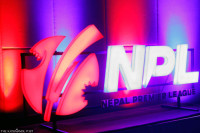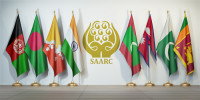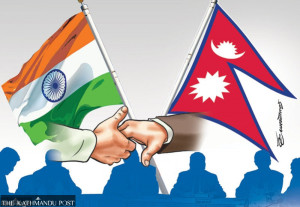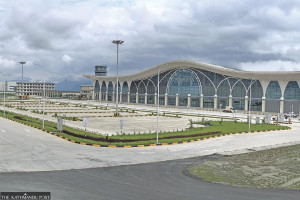Columns
Brewing change in Nepali coffee
With the right marketing practices and youth involvement, Nepal can realise its coffee potential.
Roshee Lamichhane & Binayak Malla
Lately, “Nepali coffee” has garnered significant national and international interest. Its unique selling proposition lies in the organic coffee beans produced by smallholder farmers in the foothills of the Himalaya. Domestic customers see Nepali coffee beans as a premium quality product with health benefits. Since Nepal is not well known as a coffee-growing nation, foreign consumers find our coffee to be of exotic origin. They are drawn to the coffee farmers’ distinctive tales, community-based farming methods and high-altitude production.
The café culture boom in many of Nepal’s big cities has drawn numerous youths into the third-wave coffee movement, with a particular focus on artisan coffee. Young minds are exploring the different flavour notes of coffee grown in various regions of Nepal using hand-brewing tools and techniques. They are also branching out to create innovative concoctions like cocktails and mocktails by combining coffee with alcohol, fruit juices, and soft drinks. This enthusiasm is taking Nepali coffee to newer heights.
Furthermore, a trend among youths planning to study or work abroad mastering the craft of coffee-making and proudly calling themselves “baristas” is on the rise. These skills have been advantageous in securing jobs in the global market, with individuals like Dhan Tamang gaining recognition by winning international coffee-making competitions. While the art of roasting and processing coffee has become increasingly popular among the youth and the demand for Nepali coffee has risen significantly both domestically and internationally, the primary challenge remains in supply-side constraints, as the production capacity of Nepali coffee has not substantially increased.
Reports suggest that the Nepali coffee industry is unique with high quality products. Credit for this goes to the National Coffee Policy, 2003 which encourages producing organic Arabic varietals. According to the National Tea and Coffee Development Board (NTCDB) (2017) statistics, coffee cultivation expanded to 41 districts, covering 2,646 hectares and employing around 30,543 farmers. However, recent statistics from the Nepal Coffee Producers Association for 2024-2025 show a production capacity of 586 metric tons, of which 106 metric tons are being exported.
The international demand for Nepali coffee is estimated at approximately 8,000 metric tons, yet exports only reach 106 metric tons, meaning we are tapping into just 1.3 percent of our market potential. With local consumption around 1,800 metric tons, Nepal imports between 1,200 and 1,400 metric tons of coffee each year. This raises an important question: What is hindering the country’s ability to produce more coffee?
Constraints
A major constraint in expanding Nepali coffee production is the restriction on land ownership for commercial coffee farming. Nepali law limits private ownership to 75 Ropani (3.75 hectares) per individual. Additionally, there is no clear policy on land leasing regulations preventing businesses from making long-term plans for commercial and scientific coffee farming. As a result, production relies on small-scale farms and farmers. However, with many youths migrating abroad for employment, fertile agricultural lands that could be used for coffee cultivation are left barren.
Coffee is a time-consuming crop that takes five long years to produce and demands patience and dedication. Unlike in the Tarai region where the use of machines for farming is quite common, the hilly region’s topography—an ideal environment for coffee farming—limits the access to roads, and the sloped terrain makes mechanisation difficult. Additionally, the National Coffee Policy 2003 strictly prohibits using chemical fertilisers and pesticides, making the coffee plants vulnerable to diseases and pests. Climate change and unexpected weather conditions add to the plight of farmers and directly impact the yield.
Unethical practices, such as importing cheap coffee green beans from the international market and selling it as Nepali coffee is adversely impacting the price and perception of the locally produced coffee. Challenges related to weak branding, poor packaging and a lack of product positioning as a high-end, high-value, superior and exotic coffee from the foothills of the Himalaya also persist. Similarly, the country lacks creative and passionate businesspeople who understand the high-end specialty coffee market and, at the same time, know how to sell Nepali coffee as a limited-edition luxury product.
Way forward
Although the industry has significant economic value and export potential, with a cultivation history dating back over eight decades, it faces numerous challenges that require immediate attention from stakeholders. Increasing the production volume of Nepali coffee is the only option. But it requires careful steps, i.e., following organic agricultural practices and only producing coffee beans of Arabica varietals. Conducting good research to introduce disease-resistant and high-yielding Arabica varietals that are more suitable to the climatic condition of Nepal is equally necessary.
Moreover, single origin, single varietals coffee farms in different coffee-growing regions of Nepal must be created. However, introducing higher-yielding Robusta beans that are grown at lower altitudes should be avoided. This might adversely affect the competitive position as Nepal would not be able to win the price war with low-priced commercial beans produced by some of the highest coffee-producing nations such as Brazil, Vietnam and Colombia.
Regardless of the difficulties, Nepal should always consider branding its coffee as a high-end, luxury product, like “Panama Geisha” or “Jamaica Blue Mountain coffee”. Although there is still a long way to go, Nepal is on the right track since Nepali coffee businesses are running with a community-based business model and sustainable practices, which gives them the biggest competitive advantage in the specialty coffee industry. Marketing Nepali coffee as “grown at high elevations in the Himalayan foothills” can also be a potent selling point.
Lastly, young people should be motivated to participate in every stage of the coffee value chain. Nepali girls, in particular, have a great deal of potential for studying, comprehending and promoting Nepali coffee globally. We have observed the coffee training institutes where young girls mainly engaged in learning the art of making coffee. They are also serving coffee as baristas in most of the cafes in big cities like Kathmandu and Pokhara.
Thus, these young baristas should be allowed to represent Nepali coffee at international gatherings and contests so they can interact with experts in the global coffee industry and learn the necessary skills. Giving young people access to Nepali coffee so they can discover all the opportunities it holds is an essential step in growing Nepal’s coffee potential.




 16.12°C Kathmandu
16.12°C Kathmandu.jpg)
















